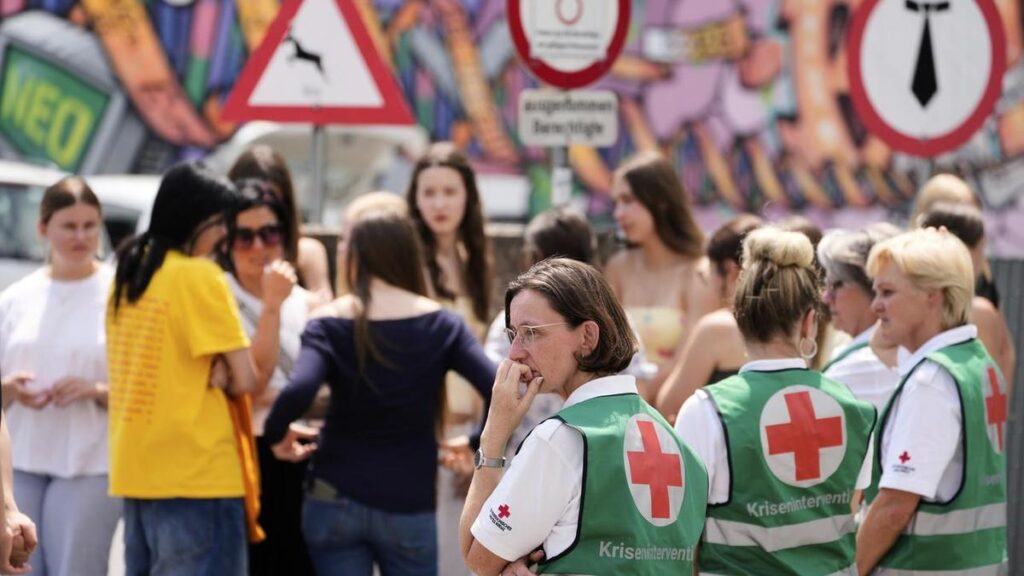Austria has come to a standstill to mourn victims of one of the worst outbreaks of violence in its modern history, as authorities search for clues to why a 21-year-old gunman shot dead 10 people at his former high school before turning the gun on himself.
Police said the man had acted alone in Tuesday’s rampage, armed with a shotgun and a pistol.
They are scouring his home and the internet to find out why he opened fire at the school in Austria’s second city of Graz, before shooting himself in a bathroom.
Authorities have not identified the man, who they said was an Austrian citizen living with his mother in an apartment in a suburb of Graz.
Local media named him as Arthur A, and that he studied IT at the school, which he left without graduating.
The dead were commemorated with a minute’s silence at 10am.
Churches rang funeral bells, including St Stephen’s Cathedral in Vienna, where about 900 public transport vehicles halted for a minute.
Public broadcaster ORF paused all radio and TV programs for one minute, with TV showing a message to say the country was mourning the victims.
The incident was hard to take in, said a religious studies teacher at the school, Paul Nitsche, who left his classroom before the gunman tried to enter, and briefly saw him trying to shoot the lock off another door.
“This is something I couldn’t even imagine before,” he told ORF.
“That’s what the situation was like as I ran down the stairwell. I thought to myself: ‘This wasn’t real.'”
Police said the gunman had left a farewell note and video that did not reveal the motive for the attack and that a non-functional pipe bomb and a discarded plan for a bomb attack were found at his home.
They did not give details of his messages.
Some Austrian media said the young man apparently felt bullied, though police have not confirmed this.
Ennio Resnik, a pupil at the school, said students and teachers needed time to come to terms with what had happened, and asked that they be left in peace for a few days.
“It’s surreal, you can’t describe or really understand it,” he said, speaking to reporters outside an events centre near the school where students were being offered counselling.
Some of the students there cried; others held each other.
Six girls and three boys, aged 14 to 17, were among the victims.
All the dead barring one Polish youth were Austrian citizens, police said.
A teacher died from her injuries, and 11 people injured are in a stable condition, they said.
Franz Ruf, director general of public security, said investigations into the motive were moving swiftly.
“We don’t want to speculate at this point,” he told ORF.
Police were on the alert for potential copycat attacks and they had received a threat against another school in Graz late on Tuesday, he said.
In Tuesday’s attack, about 17 minutes elapsed between the first emergency calls received by police about shots being fired at the school and the scene being declared safe, Ruf said.
Austria – though normally a safe and peaceful country with low levels of crime – has one of the most heavily armed civilian populations in Europe, says the Small Arms Survey, an independent research project.
The attack sparked calls, including from Graz’s mayor, for gun laws to be tightened.
Police said the guns used were in the suspect’s possession legally, and Ruf said that while Austrian gun laws were strict, the case was being looked into.
“If there are any loopholes, they need to be closed,” he said.
Details of the attack have emerged slowly.
Police said victims were found both outside and inside the school, on various floors.
Austria declared three days of mourning, with the shootings prompting a rare show of solidarity among often bitterly divided political parties.

